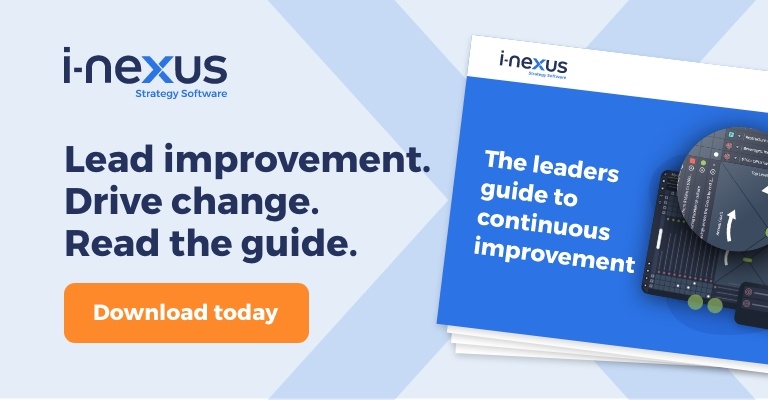Are you searching for a systematic way to improve the processes in your organization? Look no further than Continual Process Development. Here's what you need to know to get started.
Business success often pivots on our ability to adapt, enhance, and innovate continually.
An instrumental methodology that has revolutionized numerous organizations is Continual Process Development.
Today, in the first of a three-part series, we're taking you through the basics of continual process development, exploring its core principles and benefits, offering real-world illustrations, and guidance on how to take your next steps.
What is Continual Process Development?
Continual Process Development is a systematic, ongoing approach to refining organizational processes.
It involves incremental alterations over time to amplify efficiency, effectiveness, and overall performance.
In essence, it's a commitment to continuous improvement and adaptability.
Key concepts and principles
As part of continuous process improvement, you'll see the involvement of well-known concepts from the world of continuous improvement and the wider world of operational excellence.
1. Kaizen
Originating from Japan, Kaizen means "continuous improvement." It focuses on making small, gradual changes to processes, encouraging a culture of continuous learning and refinement.
2. Lean Methodology
Lean principles aim to eliminate waste, streamline processes, and create more customer value. It's all about doing more with less.
3. Six Sigma
Six Sigma is a data-driven methodology that seeks to reduce defects and process variations to enhance quality and customer satisfaction.
4. Total Quality Management (TQM)
TQM emphasizes customer satisfaction and quality improvement through employee involvement and a focus on processes.
The benefits of Continual Process Development
1. Improved efficiency
- Reduced lead times: Continual process development can lead to reduced lead times for delivering products or services to customers.
- Resource optimization: Efficient processes require fewer resources, saving time and money.
2. Cost reduction
- Waste minimization: By minimizing waste in processes, organizations reduce costs associated with rework, excess materials, and time.
- Lower operating costs: Efficient processes translate to lower operating costs and improved profitability.
3. Enhanced quality
- Increased customer satisfaction: Higher quality products or services result in greater customer satisfaction and loyalty.
- Fewer errors and defects: Continual process development can lead to fewer errors, defects, and customer complaints.
Wider uses of continual process development
1. Sustainability and environmental impact
Continual Process Development is about improving business efficiency and quality and being responsible stewards of the environment. Here's how it can contribute to sustainability and have a positive impact on the environment:
Waste reduction
One of the core principles of continual process development is reducing waste.
By systematically identifying and eliminating non-value-added activities and processes, organizations can significantly reduce waste in various forms, including material, energy, and time.
Example:
A manufacturing company that adopted continual process development identified excessive material waste in its production processes. Through incremental improvements, they reduced material waste by 30%, saving costs and contributing to a greener environment.
Resource efficiency
Efficient processes are inherently more resource-efficient. This means using fewer resources to produce the same or even greater output. Organizations that embrace continual development often find ways to optimize their resource utilization, reducing their environmental footprint.
Example:
A data center implemented continual process development to improve the energy efficiency of its servers. By making gradual adjustments and adopting energy-efficient technologies, they achieved a 20% reduction in energy consumption, positively impacting their carbon footprint.
Incorporating sustainability into your continual process development strategy aligns with social responsibility and opens the door to eco-conscious customers and stakeholders who value environmentally friendly practices.
2. Legal and regulatory compliance
Business is increasingly regulated, and maintaining legal and regulatory compliance is a non-negotiable requirement.
Continual process development is crucial in helping organizations meet these requirements, especially in highly regulated industries like healthcare, finance, and pharmaceuticals.
Data privacy and security
In industries with stringent data privacy and security regulations, continual process development can enhance compliance by implementing robust data protection measures. Regular reviews and improvements ensure that sensitive data remains secure.
Example:
A financial institution utilized continual process development to enhance its compliance with data security regulations. By implementing regular security assessments and updates, they consistently met the stringent requirements, avoiding costly fines and reputation damage.
Quality assurance in healthcare
In the healthcare sector, patient safety and regulatory compliance are paramount. Continual process development methodologies, such as Lean and Six Sigma, can help healthcare organizations improve the quality of care and ensure compliance with healthcare regulations.
Example:
A hospital implemented continual process development to streamline patient care processes, reducing medication errors and ensuring that medical staff followed the strict protocols. This led to improved patient outcomes and compliance with healthcare regulations.
Integrating continual process development into your organization's culture creates a systematic approach to meet and exceed legal and regulatory standards. This safeguards your organization from legal risks and enhances your reputation as a responsible and compliant entity.
Getting started with Process Development
For those looking to start implementing continual process development in their organizations, here are detailed steps and considerations for each:
1. Identify areas for improvement
2. Gather data to analyze current processes
3. Engage employees in the improvement process
4. Set up regular reviews and feedback mechanisms
FAQ - Frequently Asked Questions about CPD
How is continual process development different from other improvement methodologies? Continual process development shares similarities with other methodologies like Lean and Six Sigma but emphasizes ongoing, incremental changes over time. Lean focuses on waste reduction, Six Sigma focuses on reducing defects, while continual development involves a broader spectrum of improvements.
Is continual process development suitable for all types of businesses?
Yes, continual process development principles can be adapted to various industries, from manufacturing to services. It's about the mindset of continuous improvement, which applies to any business.
Are there any tools or software to support continual process development?
Several tools and software are available, such as process mapping tools, data analysis software, and i-nexus software. These tools help in implementing and tracking continual development initiatives.
How long does it take to see results from continual process development?
The timeline for seeing results can vary depending on the complexity of the processes and the commitment to change. Small improvements may be noticed relatively quickly, while more significant changes may take several months to a year.
Can continual process development work in small businesses with limited resources?
Small businesses can benefit from continual process development by focusing on small, cost-effective improvements that can lead to significant gains over time.
How do you measure success in continual process development?
Success can be measured through KPIs related to efficiency, cost savings, and product/service quality improvements. These should align with your business goals.
What role does leadership play in continual process development?
Leadership is critical in setting the tone for continual development. Leaders should champion the process, provide necessary resources, and support employee involvement.
Can continual process development be implemented in non-profit organizations?
Non-profit organizations can benefit from continual process development by improving their internal operations and maximizing their impact on their missions.
Are there industry-specific best practices for continual process development?
Some industries have specific practices, but the core principles of continual process development can be adapted to suit different sectors.
Can you provide examples of companies that failed in implementing continual process development?
While success stories are more common, there have been cases where companies failed due to insufficient commitment, lack of employee involvement, or inadequate data analysis. One example is the downfall of Blockbuster in the face of disruptive technological changes.
Getting going with CPD
Continual Process Development isn't merely a concept; it's a catalyst for lasting success. By understanding the details and embracing this approach, business professionals can unlock improved efficiency, reduced costs, and enhanced quality.
The journey towards continual improvement isn't just about success—it's about sustained success.
Note:
The second in our series explores how to implement continual process development in your business.
The third in our series explores the role of leaders in continual process development.
To learn more about how you can guide your team's efforts, download our leadership eBook:
Read more about operational excellence and related tools with our content below:
- Choosing between Lean vs. Six Sigma: which is right for you?: Lean and Six Sigma dominate conversations around continuous improvement - but how similar are they? Find out their differences and understand what fits your organization best with our guide.
- The ultimate continuous improvement jargon buster: Your guide to the many names, terms, acronyms, and phrases used when talking about delivering process improvement.
- 10 challenges facing the pharmaceutical industry in 2024: Pharmaceuticals are one of the most vital in the world, providing life-saving medicines and treatments to millions, but it's full of strategy execution challenges. Here's what that looks like.
About the author
James Milsom is Head of Marketing at i-nexus. As Head of Marketing, his drive is to raise awareness and understanding of the challenges facing enterprises in delivering strategic objectives and transformation amidst changing markets and the obstacles traditional tools and methods present leaders.
If you’d like to talk strategy, contact James at james.milsom@i-nexus.com or connect with him on LinkedIn for the latest insights.



